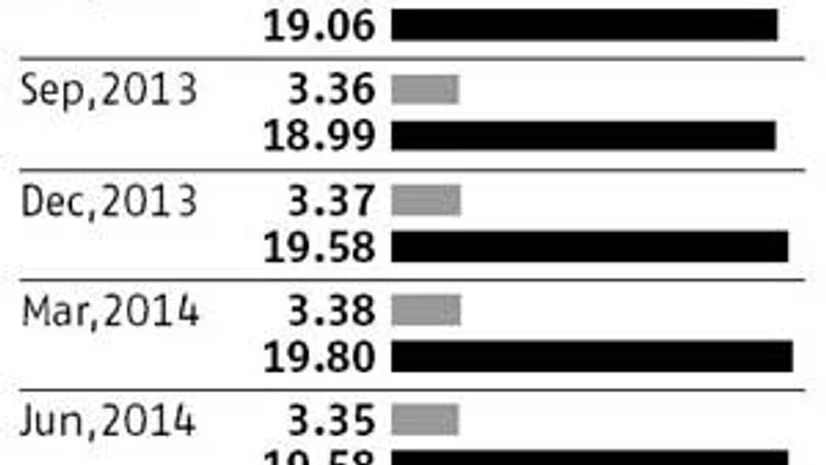According to data compiled by BS Research, MFs’ holding in the BSE 500 companies has increased to four per cent in the March quarter, from 3.35 per cent in the quarter ended June 2014. This is also higher compared to 3.6 per cent at the end of September 2014 quarter and 3.9 per cent in the quarter ended December 2014.
Since June 2014, ahead of the outcome of the general election that saw the Narendra Modi-led National Democratic Alliance (NDA) form the government at the Centre, MFs pumped Rs 53,827 crore in equities on account of an improvement in investor sentiment.
Also Read: Investors continue to prefer mutual funds to direct equities
In May 2015, also the 13th consecutive month when equity MFs witnessed an inflow, their net investment in the equity segment stood at Rs 1,975.6 crore.
Explains Lalit Nambiar, senior vice-president and fund manager, UTI Mutual Fund: “A lot of this flow is on account of positive sentiment and is also a factor of how the other asset classes fare. In case of real estate and gold, returns have been disappointing. Also investors are also looking at equities from a long-term wealth creation viewpoint. Over a period of time, investors have also realised it is more convenient and safer to invest in the markets through the MF route than invest directly.”

Also Read: MFs to have 10-cr investor a/c, Rs 20-tn asset base by 2018
Of the companies comprising the BSE 500, shareholding pattern data for 497 firms is available for the March quarter. Of this, MFs’ stake in 142 companies increased over one percentage point each and up to one percentage point in 131 firms. However, they reduced their stake in 148 companies, while in the remaining 76, the holding remained unchanged.Meanwhile, foreign institutional investors (FIIs) ownership in BSE 500 companies remained unchanged at 20.35 per cent in the March quarter, compared with the previous quarter. Their stake was about 19.58 per cent at the end of the June 2014 quarter.
Outlook
The road ahead for flows into the MF segment, analysts say, depends on how the overall market sentiment plays out. If the markets remain volatile, flows into the equity MF segment might pause. However, the fall in the markets from the peak levels presents investors a good entry point from a long-term viewpoint, they add.
Also Read: India's mutual funds base to top $325 bn by 2018: Sundeep Sikka
Ritesh Jain, chief investment officer, Tata Asset Management, sees the recent fall as a ‘bull market’ correction that is giving a long-awaited investment opportunity to investors who did not fully capitalise during the upturn.“Markets ran up ‘too fast…too soon’ without meaningful correction and a sobering was due. While we were getting cautious in March, the current correction has removed froth and it is time to add to equity allocations with an absolute return perspective. Though we may see some more pain in terms of time correction but there is opportunity to make smart money by taking a calculated risk,” he says.
Rakesh Arora, managing director and head of research at Macquarie Capital Securities (India), in a recent report, suggests investors do acknowledge that India is a better emerging market story over the medium term.
“While any further re-rating looks unlikely, we think price-to-earnings multiples may not de-rate either, given India’s relatively better macro position on the global map - with reforms underway, lower external risks, easing inflation and a rate-easing cycle. These steps may start bearing fruit over the next couple of years, which makes for a good entry point into the market for investors with a two-three year horizon,” he says.

)
